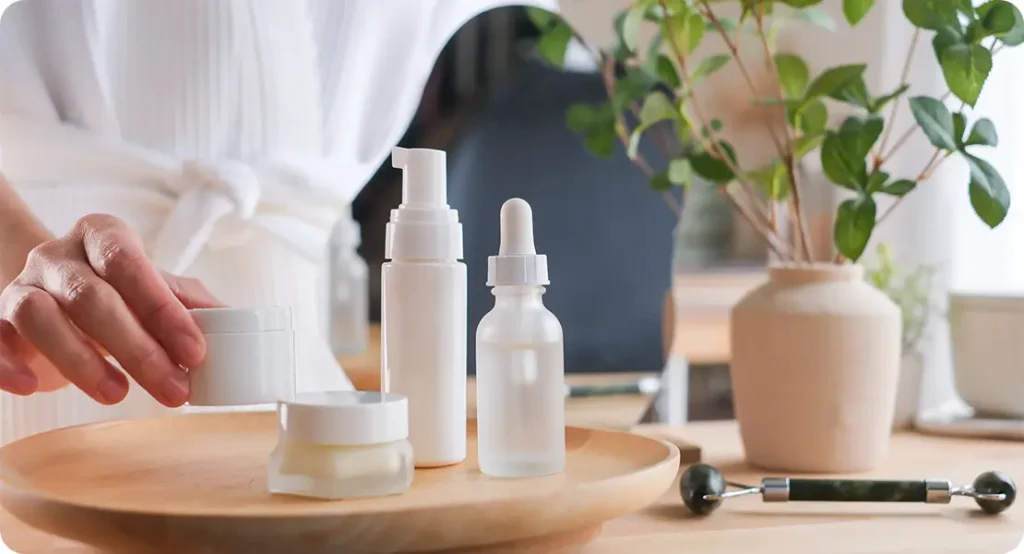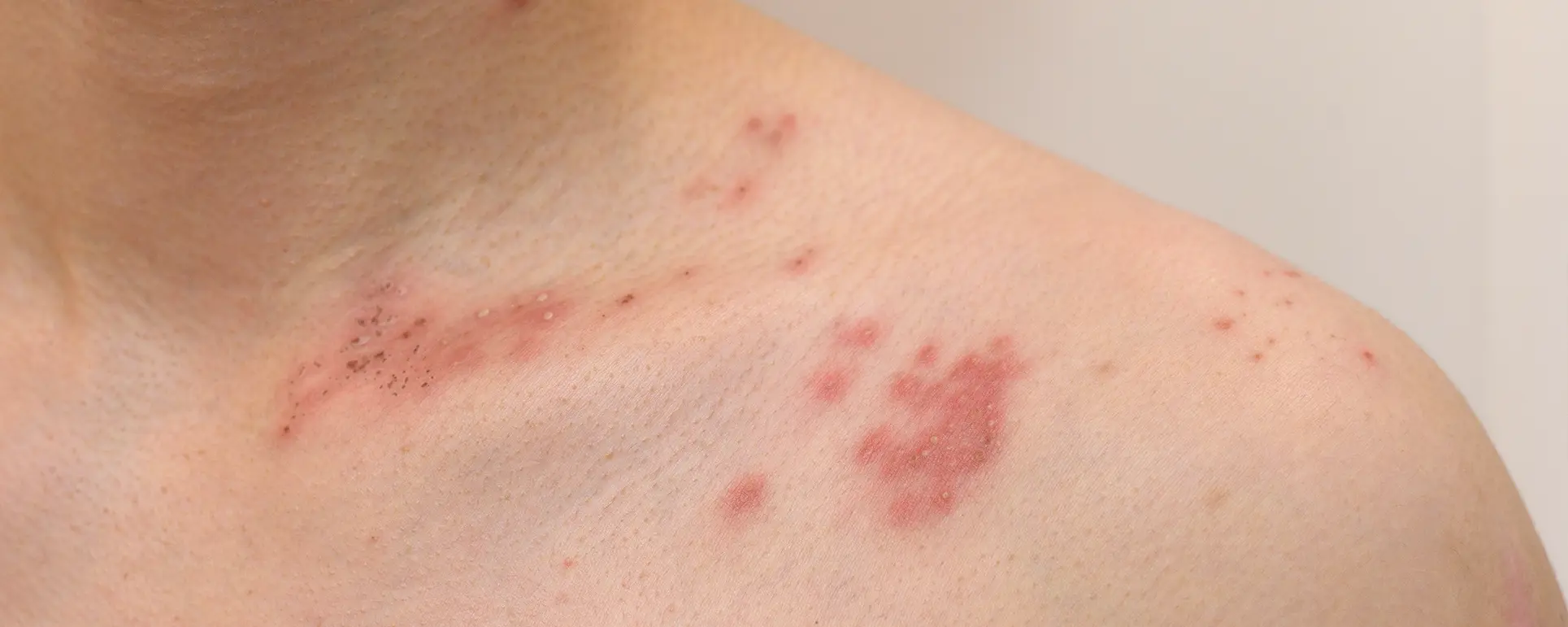Trying new skincare products can be exciting after all, the beauty industry is full of promising creams, serums, and cleansers that claim to deliver glowing, youthful, or blemish-free skin. It’s easy to feel hopeful when you bring home a product that everyone seems to be raving about, whether it’s recommended by friends, promoted by influencers, or backed by glowing online reviews. But sometimes, the reality is very different. Instead of seeing smoother, healthier skin, you might notice stinging, redness, burning, or even breakouts within hours or days of using something new. That excitement quickly turns into disappointment and frustration.
If this keeps happening to you if your skin reacts almost every time you add something new to your routine it’s worth looking more closely at what’s going on. The truth is, not all skin reacts the same way to products. Some people can experiment with new ingredients without issue, while others find that even gentle formulas lead to irritation. You may start to wonder whether you have sensitive skin, whether your skin barrier has become weakened, or whether hidden ingredients in products are to blame.
Skin reactions can take different forms. Some people experience immediate stinging or burning, which usually points to irritation. Others notice gradual dryness, flakiness, or redness that develops over days. And for many, reactions come in the form of clogged pores or new breakouts that appear after trying a moisturiser or serum. All of these responses are your skin’s way of communicating that it doesn’t agree with something in the product or that your skin isn’t currently in a healthy enough state to handle new ingredients.
There are several possible reasons behind these reactions. Strong active ingredients like retinoids, exfoliating acids, or benzoyl peroxide can be powerful tools in skincare, but when introduced too quickly or used in high concentrations, they often overwhelm the skin. Even products marketed as “gentle” can sometimes contain fragrances, preservatives, or essential oils that act as hidden triggers, especially for people with sensitive or allergy-prone skin. On top of that, conditions like eczema, rosacea, or a compromised skin barrier can make your skin far more reactive than usual, causing flare-ups even with products that others tolerate without issue.
Dermatologists frequently see patients stuck in a cycle of trying, reacting, and abandoning skincare products. It can feel discouraging, but the good news is that reactions are not a permanent sentence you just need the right approach. By identifying your skin’s unique triggers, learning how to patch-test products properly, and strengthening your skin barrier with the right basics, it’s possible to create a routine that actually works for you. The key is patience, consistency, and sometimes, professional guidance.
Instead of endlessly switching from one trendy product to another, a dermatologist can help you figure out what your skin truly needs, which ingredients to avoid, and how to gradually build up tolerance to active ingredients without causing repeated irritation. With this kind of tailored care, you can shift from trial-and-error to a more stable, confident routine that supports your skin’s long-term health.
1. Irritation vs. Allergies vs. Sensitivity

When your skin reacts to a new product, the cause isn’t always the same. Reactions generally fall into three main categories: irritation, allergic reactions, and sensitivity. Although they may look similar on the surface redness, bumps, itching each has its own root cause, timeline, and treatment approach. Understanding these differences is the first step toward figuring out what your skin is really telling you.
Irritation
Irritation happens when a product or ingredient directly disrupts your skin barrier. The skin barrier is the protective layer that locks in moisture and shields you from environmental damage. When it’s overwhelmed either by strong ingredients or overuse your skin starts to show signs of distress.
Common irritants include:
- Exfoliating acids like glycolic acid, lactic acid, and salicylic acid
- Retinoids such as tretinoin or retinol
- Acne treatments like benzoyl peroxide or sulfur
- Harsh cleansers with strong surfactants (foaming agents)
Symptoms of irritation often appear quickly after application. You may feel burning, stinging, or tightness, followed by redness or dryness. In some cases, skin may even peel or flake as it struggles to recover.
The good news? Irritation is usually short-lived. Once you stop using the product and switch to gentle, hydrating care, your skin often bounces back within a few days. Dermatologists recommend looking for soothing ingredients like aloe vera, ceramides, and hyaluronic acid to speed up recovery. And if you still want to use strong actives like acids or retinoids, the key is to introduce them gradually starting with one or two nights a week rather than applying them daily right away.
Think of irritation as your skin saying: “You pushed me too hard. Give me time and be gentler.”
Allergic Reactions
An allergic reaction is different because it involves your immune system. In this case, your body sees a particular ingredient as a harmful invader and launches a defence response. The result? Inflammation, swelling, rashes, or even hives.
Unlike irritation, allergic reactions aren’t necessarily dose-dependent. Even a tiny amount of the allergen can trigger a noticeable response. Some common culprits include:
- Fragrances (both synthetic and natural)
- Preservatives such as parabens, methylisothiazolinone, or formaldehyde releasers
- Botanical extracts (lavender, tea tree oil, citrus oils)
- Dyes and colourants in makeup or skincare
Another difference is timing. Allergic reactions may not appear immediately they can take several hours or even days to fully show up, which makes it harder to identify the exact product responsible. Symptoms may spread beyond the area where you applied the product, sometimes affecting the eyelids, neck, or hands.
Because allergies involve your immune system, they often take longer to resolve than irritation. Mild cases may calm down with antihistamines and soothing skincare, but severe or persistent reactions usually require medical attention. Dermatologists can perform patch testing to help identify the exact allergen so you know what to avoid in the future. Without testing, it’s easy to end up in a cycle of repeated reactions.
Sensitivity
Skin sensitivity is a little different. It’s not about overuse of a product or an allergy to one specific ingredient it’s about your skin’s overall predisposition to react. People with sensitive skin have a naturally more delicate skin barrier, which makes them prone to redness, dryness, and irritation from even mild products.
Signs of sensitivity often include:
- Redness or flushing after applying skincare
- Tingling or stinging with products that most people tolerate
- General discomfort in response to weather changes, pollution, or stress
Many people with underlying skin conditions like rosacea, eczema, or atopic dermatitis fall into this category. But even those without a formal diagnosis can simply have skin that reacts more easily than average. Sensitive skin can be frustrating because it makes experimenting with new products difficult you may feel like nothing works without causing some degree of discomfort.
Dermatologists often recommend a “less is more” approach for sensitive skin. This means sticking to a minimal routine of gentle cleansers, fragrance-free moisturisers, and daily sunscreen. When introducing a new product, patch testing is especially important. Over time, strengthening the skin barrier with barrier-repairing ingredients (such as ceramides, niacinamide, and fatty acids) can make sensitive skin more resilient and less reactive.
2. Common Triggers in Skincare Products

Skincare products often look harmless on the surface, especially when they come in sleek packaging or carry claims such as “gentle,” “dermatologist-approved,” or “for all skin types.” But the reality is that not every ingredient works well for everyone. Some people can use a wide variety of products without any trouble, while others find that just a single new addition to their routine causes burning, itching, or stubborn breakouts. The key is to recognise which ingredients are most commonly linked to skin irritation and to approach them with caution.
Fragrance and alcohol:
Fragrance is one of the leading irritants in skincare, and it doesn’t matter whether the scent comes from synthetic chemicals or natural essential oils. Both can trigger allergic reactions or increase sensitivity, especially in people prone to eczema, rosacea, or contact dermatitis. Even products that are labelled “unscented” may still contain masking agents designed to cover up the smell of other ingredients, which can be just as irritating.
Alcohol is another potential trigger, though not all types are equally harmful. Drying alcohols, such as denatured alcohol, ethanol, or isopropyl alcohol, are often used to make products feel lightweight and quick-drying. Unfortunately, these can strip away natural oils, leaving the skin dehydrated and more vulnerable to environmental stressors. On the other hand, fatty alcohols like cetyl, stearyl, and cetearyl alcohol are generally safe and can even be moisturising. The challenge is being able to tell the difference when reading a product label.
Active ingredients:
Active ingredients are the powerhouse components in skincare, but their strength also makes them a common source of irritation. Acids such as glycolic acid, lactic acid, and salicylic acid can exfoliate dead skin cells, but if used too frequently, they may weaken the protective barrier and cause redness or stinging. Retinoids, often praised for their anti-ageing benefits, are notorious for causing peeling, dryness, and a temporary increase in sensitivity when first introduced. Even vitamin C, a favourite for brightening skin, can cause a burning sensation in higher concentrations.
It’s not that these ingredients should be avoided entirely, but rather that they need to be introduced carefully. Dermatologists often recommend starting with a low concentration, applying the product only a few times a week, and gradually increasing frequency as your skin builds tolerance. Combining multiple strong actives at once like acids and retinoids in the same routine can also make irritation much more likely.
Preservatives and dyes:
Preservatives are necessary in most skincare products because they prevent bacteria, mould, and yeast from growing inside the packaging. Without them, your creams and serums could spoil quickly and become unsafe to use. However, certain preservatives, such as parabens, formaldehyde releasers, and methylisothiazolinone (MI), have been linked to allergic skin reactions in sensitive individuals. While not everyone will react, those with easily irritated or allergy-prone skin should be cautious.
Artificial dyes are another potential issue. While they may make a product look more appealing, they serve no real skincare purpose and can trigger unnecessary irritation, particularly for people with conditions like rosacea or sensitive skin. Choosing fragrance-free, dye-free, and hypoallergenic products is often a safer route for anyone prone to flare-ups.
Why it matters:
Understanding these common triggers can save you time, money, and discomfort. Many people spend months trying to figure out why their skin is red or breaking out, when the culprit could be something as simple as fragrance or a too-strong acid. By learning to read ingredient lists and knowing which items to avoid, you can make more informed choices and build a skincare routine that works with your skin, not against it.
3. How Dermatologists Help

If you find yourself frequently reacting to new skincare or cosmetic products, it may be time to seek professional guidance. A dermatologist in London can play a crucial role in helping you understand what’s really happening with your skin. Instead of guessing which ingredient might be causing the problem, they use scientific approaches to identify the exact trigger. Here are a few ways they can support you:
- Patch testing: This is one of the most reliable methods for detecting allergies to specific ingredients. During the test, small amounts of common irritants are applied to your skin, usually on your back, and monitored over a few days. This allows dermatologists to pinpoint whether you’re reacting to fragrances, preservatives, dyes, or other components in your products.
- Detailed skin assessments: Dermatologists don’t just look at the surface of your skin; they take a holistic view. By examining your skin type, overall health, and lifestyle factors, they can better understand whether your reactions are due to sensitivity, an underlying condition such as eczema, or even external triggers like pollution and stress. This thorough evaluation ensures that any recommendations are tailored specifically to you.
- Personalised product recommendations: Once your triggers are identified, dermatologists can guide you towards safe and effective products. Instead of navigating the overwhelming number of options on the skincare aisle by yourself, you’ll have expert advice on what ingredients to avoid and which formulations are best suited for your skin. This not only helps reduce flare-ups but also builds a consistent skincare routine that supports long-term skin health.
By working with a dermatologist, you can move away from trial-and-error and towards a more confident, informed approach to your skincare.
4. What You Can Do to Prevent Reactions
While it’s not always possible to predict how your skin will react to a new product, there are several steps you can take to reduce the risk of irritation and breakouts. A few practical measures include:
- Always patch test new products: Before applying anything directly to your face, try it on a small area of skin first, such as behind your ear or on your inner arm. Leave it on for 24–48 hours and watch for redness, itching, or bumps. If your skin tolerates the product well, it’s much safer to start using it more broadly.
- Introduce products slowly and one at a time: It can be tempting to overhaul your routine with multiple new products, but this makes it nearly impossible to identify the cause if a reaction occurs. Instead, add products gradually waiting at least a week before introducing another. This gives your skin time to adjust and helps you spot potential triggers.
- Opt for gentle, fragrance-free formulas: If you know your skin is on the sensitive side, keep your routine simple. Look for products labelled as hypoallergenic, fragrance-free, or formulated for sensitive skin. These are less likely to include harsh ingredients like alcohol, dyes, or strong actives that can irritate.
- Support your skin barrier: A compromised skin barrier is more prone to reactions. Incorporating moisturisers with ceramides, hyaluronic acid, or niacinamide can help strengthen your skin, making it more resilient to external irritants.
- Consult a dermatologist for personalised advice: Even with careful product selection, trial and error can only take you so far. A dermatologist can assess your skin’s unique needs, rule out underlying conditions, and design a skincare routine that minimises risk while still addressing your concerns.
By following these steps consistently, you not only lower your chances of experiencing uncomfortable reactions but also build a routine that supports healthier, calmer skin in the long term.
Final Thought: Finding Calm for Sensitive Skin
If your skin reacts almost every time you try something new, it doesn’t mean you can’t enjoy skincare it just means your skin needs a more careful approach. Identifying whether the issue is irritation, an allergy, or general sensitivity is the first step. From there, you can build a routine with products that suit your skin rather than stress it.
If you’re struggling with repeated reactions, professional guidance can make all the difference. You can book a consultation with an experienced dermatologist in London to uncover your triggers and find products that keep your skin calm, balanced, and healthy.
References:
- Duarte, I., González, F.J., Chamorro, M. E., Requena, L., Aranegui, B. and García-Morales, I., 2017. Sensitive skin: review of an ascending concept. International Journal of Cosmetic Science, 39(5), pp. M31–M39. Available at: https://www.ncbi.nlm.nih.gov/pmc/articles/PMC5595600/
- Huang, L., Li, J., Wang, Y., Chen, Y. and Li, X., 2018. Adverse cutaneous reactions to skin care products on the face: a study of 245 patients. Journal of Cosmetic Dermatology, 17(5), pp. 526–532. Available at: https://www.ncbi.nlm.nih.gov/pmc/articles/PMC6234074/
- Martins, M. S., Ferreira, M. S., Almeida, I. F. and Sousa, E., 2022. Occurrence of allergens in cosmetics for sensitive skin. Cosmetics, 9(2), 32. doi: 10.3390/cosmetics9020032. Available at: https://www.mdpi.com/2079-9284/9/2/32
- Johansen, J.D., Aalto-Korte, K., Agner, T., Andersen, K.E., Bircher, A., Bruze, M., Goossens, A., Giménez-Arnau, E., Lepoittevin, J.-P., Rustemeyer, T. and White, I.R., 2015. European Society of Contact Dermatitis guideline for diagnostic patch testing. Contact Dermatitis, 73(4), pp. 195–221. Available at: https://onlinelibrary.wiley.com/doi/10.1111/cod.12432
- Lin, S.-H. and Chao, Y.-C., 2025. Clinical characteristics and patch test results in 57 patients with contact dermatitis in Southern Taiwan. Journal of Clinical Medicine, 14(7), 2291. doi: 10.3390/jcm14072291. Available at: https://www.mdpi.com/2077-0383/14/7/2291
